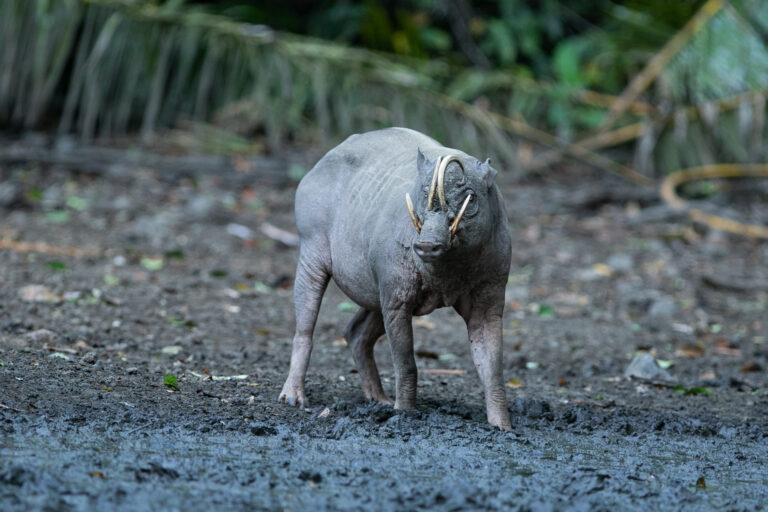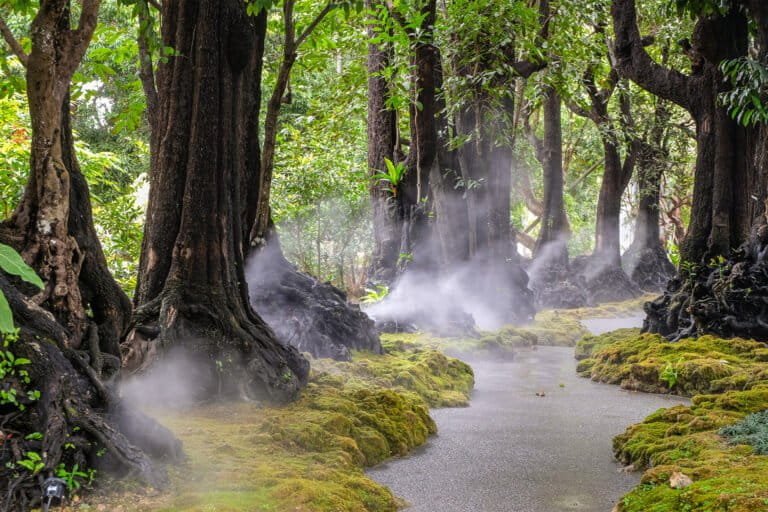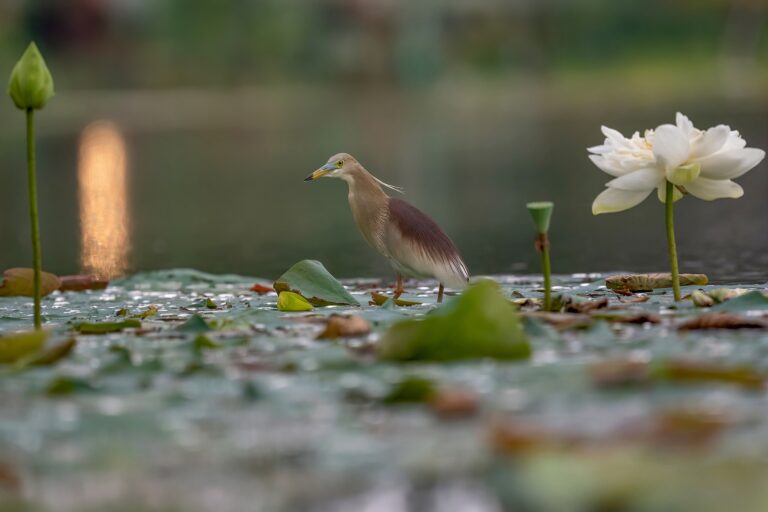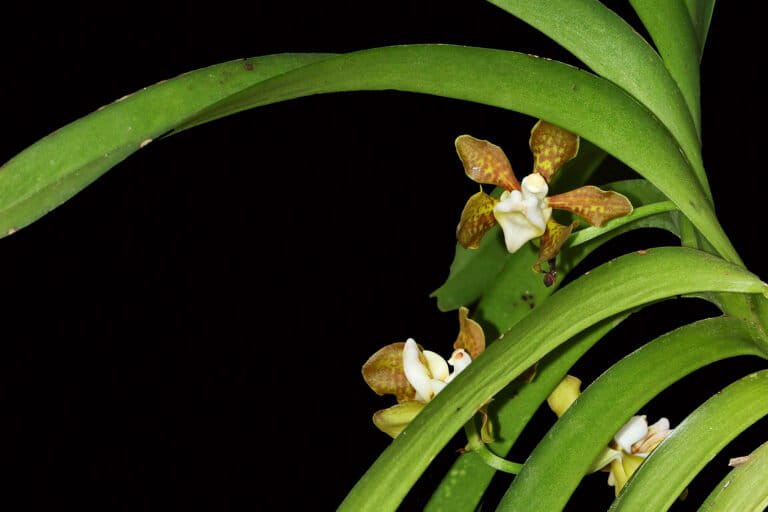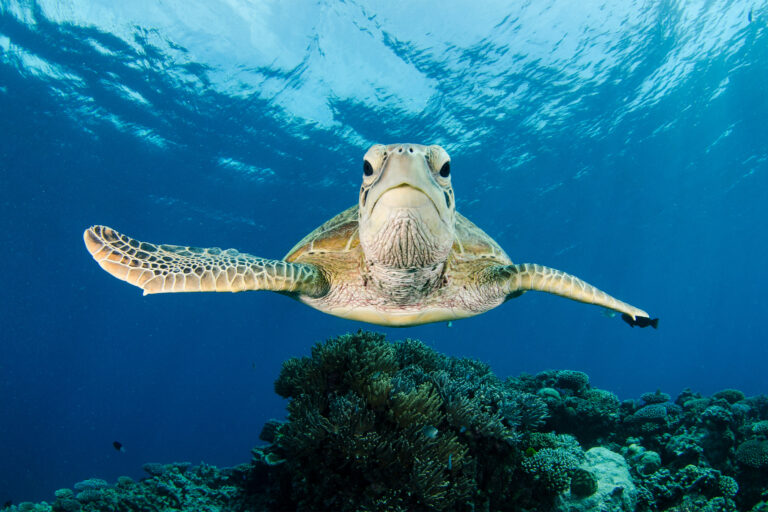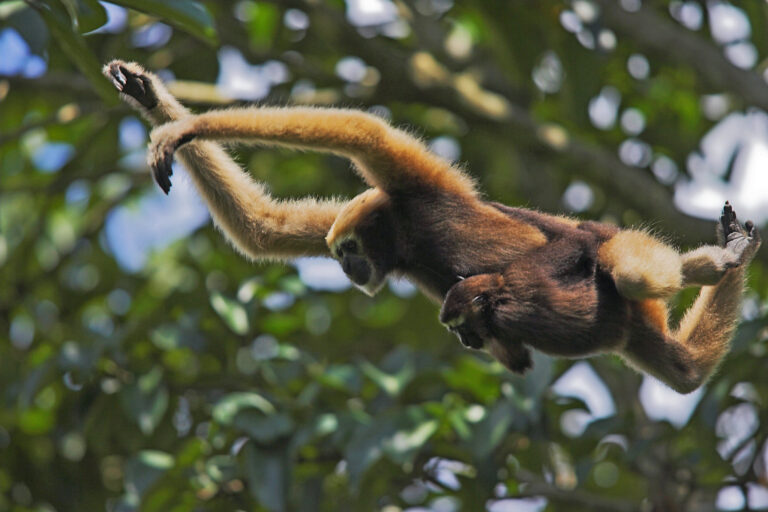- After 160 years, scientists in Sri Lanka have rediscovered Vanda thwaitesii, a delicate tropical Asian orchid, by referring to scientific drawings to make the connection.
- Sri Lanka’s rich array of orchids face threats from illegal collection and habitat loss, but climate change may pose an even greater risk by disrupting their growth, flowering and pollination.
- This rediscovery was made possible through citizen science, a common factor in many recent findings, but experts caution that social media can be a double-edged sword, as it may also encourage illegal harvesting.
- Conservationists also caution that this rediscovery does not mean recovery and call for urgent measures to safeguard the island’s fragile floral heritage.
COLOMBO — In the mist-wrapped folds of Sri Lanka’s Knuckles Mountain Range, a UNESCO-recognized world heritage site, where clouds softly wrap the rugged peaks in a soft embrace, a group of scientists recently stumbled upon a ghost from the island’s colonial past, in the form of a forgotten orchid. Nestled among the branches of forest trees near a tributary of the Mahaweli River in Rangala, Kandy district, bloomed Vanda thwaitesii — a delicate orchid unseen in the wild for more than 160 years.
The orchid had never been studied alive, even by eminent British botanist Joseph Dalton Hooker, who described it in 1898 based on only two drawings by Haramanis de Alwis, the official draftsman at Sri Lanka’s Royal Botanic Gardens at the time. With no herbarium specimens collected, the plant slipped into obscurity and was widely presumed extinct.
“Many assumed it had vanished from the Earth, so we were delighted to find it alive after all this time,” says Bhathiya Gopallawa, a Ph.D. candidate at Sri Lanka’s University of Peradeniya, who co-authored the paper announcing the rediscovery.
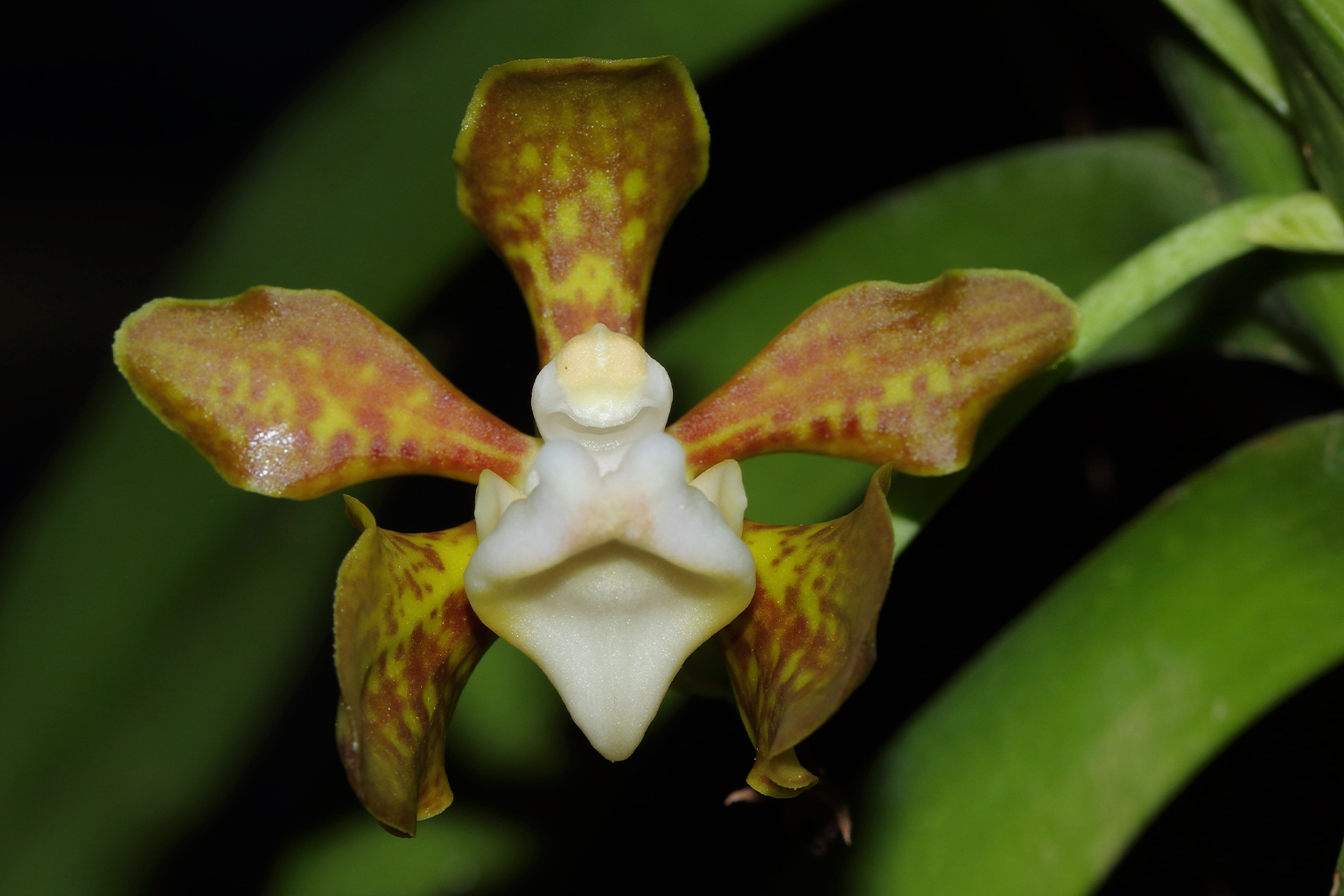
A scientific twist
The return of V. thwaitesii is also a testament to citizen science, a trait of many recent floral rediscoveries and finding of rare plants. Gopallawa and colleagues had established a Facebook group, Medicinal Plant Identification, to connect botanists with plant enthusiasts across Sri Lanka. In 2020, he posted a painting of the orchid.
One member, Pradeep Kodithuwakku, recognized the flower. Years earlier, he had found an orchid that had fallen near a stream in Rangala. Believing it was valuable in some way, he took it home and cared for it. When it began flowering a few years later, he took a photo and later shared it with Gopallawa, who was struck by its resemblance to the long-lost orchid. Together with field botanist Himesh Jayasinghe, he visited Kodithuwakku’s home to confirm the discovery.
But celebration was tempered by caution. Posting rare orchid finds online can attract collectors, who strip plants from the wild to sell or display. Fearing this fate, the researchers relocated the specimen, still attached to its decaying log to the Royal Botanic Gardens in Peradeniya.
At its new home, the orchid bloomed again after about one year, producing three flowers in April 2021. Gopallawa and Jayasinghe dissected one flower to study its internal structures and left the others to set seed. To their joy, a seed pod formed, and the team carefully germinated it. Tiny seedlings sprouted, but they soon died, likely because the orchid depends on a symbiotic fungus in the soil, according to Gopallawa.
The rediscovery also untangled a long-standing taxonomic mix-up. For years, an orchid in India had been misidentified as V. thwaitesii. By designating a Sri Lankan drawing from the 1860s as the official reference, scientists reinstated the species’ identity. The Indian orchid was later reclassified as V. sathishii, resolving decades of confusion.
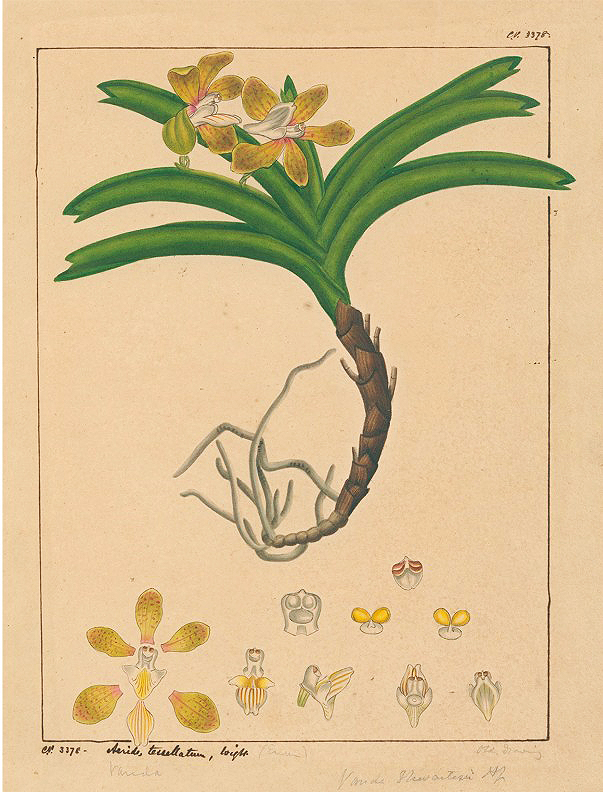
Orchids in peril
Sri Lanka’s orchid heritage is dazzlingly rich, and more than 200 wild orchid species have been recorded, spread across 78 genera, with 35% of them found nowhere else on Earth. The showy Vesak orchid (Dendrobium maccarthiae) adorns temple offerings, while jewel orchids (Anoectochilus spp.) sparkle on rainforest floors. Together, they form a vital part of the island’s natural and cultural identity.
But this wealth is under siege. Illegal collection remains one of the biggest threats. Conservationists say social media has made matters worse, with photos of rare orchids triggering some people to rush in to harvest them, proving social media to be a double-edged sword that can be used both for positive and negative purposes. During the COVID-19 lockdowns, authorities reported a spike in orchid poaching, with wild-sourced plants being openly advertised online. Kodithuwakku himself received offers as high as 150,000 Sri Lankan rupees (about $500) for the rediscovered orchid’s location, Mongabay finds.
“I haven’t told anyone in the village about the importance of this orchid, as I fear the remaining plants may be targeted, if the location is known,” Kodithuwakku tells Mongabay.
Habitat destruction poses yet another danger. Many orchids live on the trunks and branches of forest trees. When these trees are logged or forests are cleared, the orchids that depend on them are also destroyed. Others depend on very specific ecosystems, such as the swampy grasslands of Horton Plains in the island’s Central Highlands, where burning or overgrazing can silently erase species.
Climate change looms as the greatest long-term threat. Orchids are especially sensitive to shifting conditions, and as a result, orchids are very sensitive to changes in climate, Gopallawa says.
“Many rely on a single pollinator, so if that insect changes its timing or moves to a new area, the orchid may not be pollinated. Their tiny seeds also need special fungi in the soil to grow, and these fungi can be affected by shifts in temperature and rainfall. On top of that, many Sri Lankan orchids grow only in the cool highlands, with no higher ground left to move to as the climate warms,” the botanist adds.

A fragile future
Researchers note that populations of V. thwaitesii are already dwindling. Fewer than 10 individuals remain in Rangala, with numbers declining since the orchid’s rediscovery by the researchers. Seed pods have been observed, suggesting that pollinators are still present. This points to broader climate stress as a likely factor behind its shrinking numbers.
“Although Sri Lanka is rich in orchid diversity, the survival of native species is becoming increasingly difficult due to human activity,” says orchid researcher Jeevan Kottawa-Arachchi. Showy species such as D. maccarthiae, Phaius wallichii and Rhynchostylis retusa are especially vulnerable, targeted both for breeding and as flowers for temple offerings.
Kottawa-Arachchi stresses that legal protections are important but not enough. “Public awareness of our native orchids is crucial for their future conservation,” he says. According to The National Red List 2020: Conservation Status of the Flora of Sri Lanka, approximately 68% of Sri Lanka’s orchid species are categorized as threatened. This includes 84% of the island’s endemic orchid species, highlighting the critical conservation status of these plants, Kottawa-Arachchi tells Mongabay.
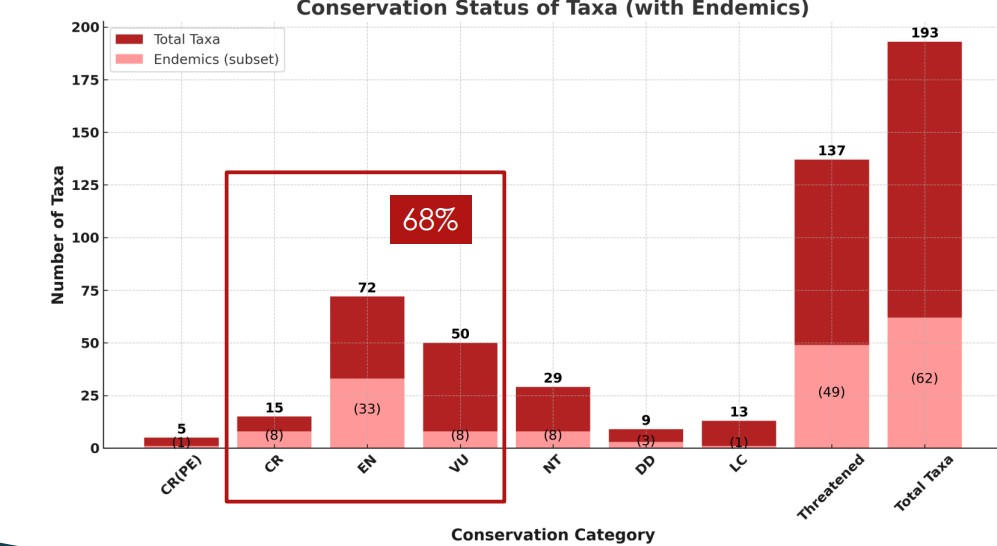
A second chance
The rediscovery of V. thwaitesii is a story of hope, but also of urgency. It shows that even after 160 years, nature can surprise us. But rediscovery is not recovery. Without effective conservation efforts, the orchid could disappear again, this time for good.
For Sri Lanka, where orchids are entwined with faith, identity and ecology, their loss would be immeasurable. Protecting them will demand a mix of science, law enforcement and public participation.
“Every orchid rediscovered is a second chance,” Gopallawa says. “What we do with that chance will decide whether these species survive the century.”
Banner image: Flowers and leaves of the Vanda thwaitesii. Image by Bhathiya Gopallawa.
A key driver of decline, can wild orchid collectors change their ways?
Citation:
Gopallawa, B., Madola, I., Yakandawala, D. et al. Rediscovery of the endemic Vanda thwaitesii (Orchidaceae) after 160 years in the central highlands of Sri Lanka and its lectotypification. Kew Bull (2025). doi:10.1007/s12225-025-10280-1







